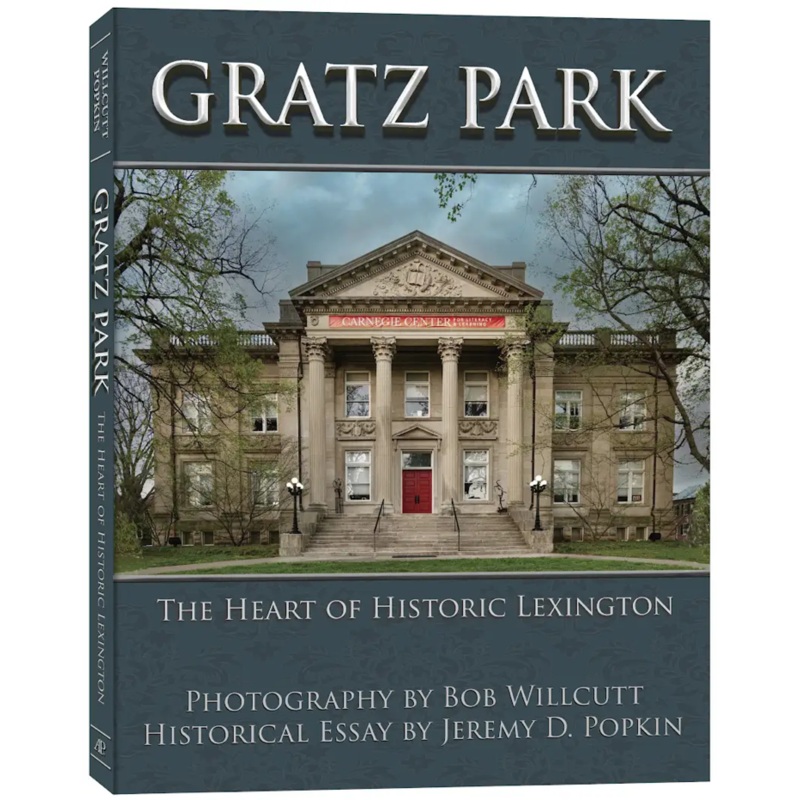 Sale!
Sale! Gratz Park: The Heart of Historic LexingtonPhotographs by Bob Willcutt, text by Jeremy D. Popkin Gratz Park: The Heart of Historic Lexington combines photographs by Bob Willcutt and original text by Jeremy D. Popkin to tell the story of our citys oldest hi
Gratz Park: The Heart of Historic Lexington
Photographs by Bob Willcutt, text by Jeremy D. Popkin
Gratz Park: The Heart of Historic Lexington combines photographs by Bob Willcutt and original text by Jeremy D. Popkin to tell the story of our citys oldest historical district, a story that is also a story of Lexingtons history, from its earliest days to the present. Originally set aside in 1792 to serve as the first home of Transylvania University, Gratz Park became home to some of Lexingtons leading citizens, including Benjamin Gratz, for whom it would eventually be named. Other prominent residents have included the family of Confederate general John Hunt Morgan and Jim Gray, the citys mayor from 2011 to 2019. Until the Civil War, Gratz Park was also in the middle of Lexingtons hemp-manufacturing district. Hundreds of enslaved Blacks labored within sight of the park to produce the wealth that paid for the handsome mansions around it, where other enslaved people worked as domestic servants. Both Union and Confederate soldiers camped in the park during the Civil War, and the conflict divided the families living there. After 1865, the site became a private park, managed by Benjamin Gratzs son Howard, who turned it into a segregated preserve for respectable white people.
In the early 20th century, after a long campaign, the city of Lexington acquired the park and the Carnegie Library was erected in its southern end. In the 1920s and 1930s, as automobiles became more common, Gratz Park was promoted as Lexingtons leading attraction for tourists. In the 1950s, urban planners proposed solving downtown traffic problems by running a multilane distributor street through the middle of the park. To save it, local citizens founded Lexingtons first historic-preservation group, the ancestor of the Blue Grass Trust that has played such a large role in protecting the physical traces of our citys past. In the late 20th century, the park became a favorite location for civic events, a role that has now shifted to other locations downtown. As Lexington grapples with the place of slavery and segregation in its history, the way we see Gratz Park is changing once again. An artwork in the Carnegie Center for Literacy now reminds visitors of the days when Black residents, barred from the park itself, had to enter the public library through a back door.
Through photographs of the park today, reproductions of historical documents, and a lively narrative based on original historical research, Gratz Park: The Heart of Historic Lexington makes a unique contribution to the upcoming celebration of the 250th anniversary of our citys founding. Photographer Bob Willcutt is well known for his books on other Lexington-area historic sites, Henry Clays Ashland, Ward Hall: Kentuckys Greek Revival Masterpiece, and Wavelands Treasures. This is his first collaboration with Jeremy D. Popkin, the William T. Bryan Chair Professor of History (emeritus) from the University of Kentucky. Popkin is the author or editor of more than two dozen books, including A New World Begins: The History of the French Revolution and You Are All Free: The Haitian Revolution and the Abolition of Slavery.
Cost: $25
Free Shipping
We offer free shipping on orders over $30. Please check the free - shipping eligibility at checkout.
Delivery Time:
It usually takes [3-5] business days for standard shipping. Please note that this is an estimated time frame and may be affected by local holidays, and unforeseen circumstances.
Reviews
There are no reviews yet.